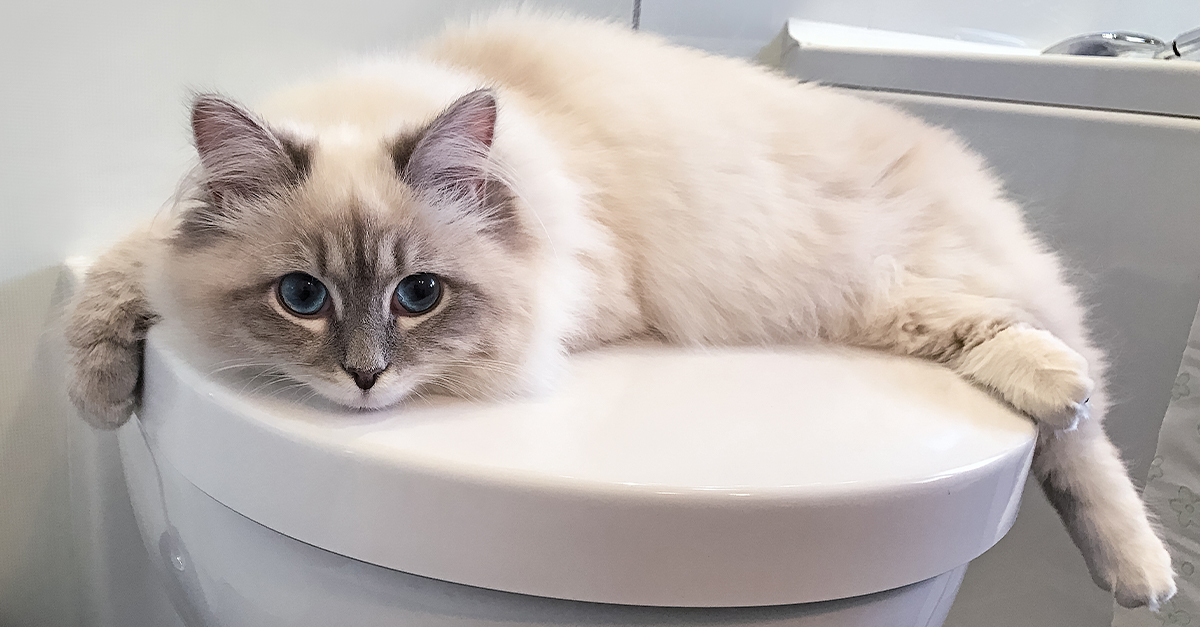The Risks of Flushing Cat Poop in Your Toilet - Preventive Steps
The Risks of Flushing Cat Poop in Your Toilet - Preventive Steps
Blog Article
The author is making a few great observations relating to Can You Flush Cat Poo or Litter Down the Toilet? overall in this post down the page.

Intro
As pet cat owners, it's important to bear in mind how we get rid of our feline close friends' waste. While it might appear hassle-free to purge cat poop down the toilet, this method can have harmful consequences for both the setting and human wellness.
Alternatives to Flushing
Luckily, there are much safer and a lot more accountable methods to dispose of cat poop. Take into consideration the complying with alternatives:
1. Scoop and Dispose in Trash
One of the most usual approach of taking care of feline poop is to scoop it into a naturally degradable bag and toss it in the garbage. Make sure to use a specialized litter scoop and deal with the waste promptly.
2. Use Biodegradable Litter
Select eco-friendly cat trash made from products such as corn or wheat. These clutters are eco-friendly and can be securely thrown away in the garbage.
3. Hide in the Yard
If you have a lawn, take into consideration burying cat waste in an assigned location away from vegetable yards and water resources. Make sure to dig deep enough to prevent contamination of groundwater.
4. Set Up a Pet Waste Disposal System
Invest in an animal garbage disposal system specifically developed for pet cat waste. These systems use enzymes to break down the waste, reducing odor and environmental effect.
Health Risks
Along with environmental concerns, flushing feline waste can additionally pose health threats to humans. Feline feces may have Toxoplasma gondii, a parasite that can trigger toxoplasmosis-- a possibly severe illness, especially for expectant women and people with damaged immune systems.
Ecological Impact
Flushing pet cat poop presents damaging microorganisms and bloodsuckers into the water supply, presenting a considerable threat to aquatic ecological communities. These pollutants can adversely influence aquatic life and concession water high quality.
Conclusion
Responsible pet dog possession expands past providing food and shelter-- it additionally entails appropriate waste administration. By avoiding flushing pet cat poop down the toilet and choosing alternative disposal methods, we can reduce our environmental footprint and secure human health and wellness.
Why Can’t I Flush Cat Poop?
It Spreads a Parasite
Cats are frequently infected with a parasite called toxoplasma gondii. The parasite causes an infection called toxoplasmosis. It is usually harmless to cats. The parasite only uses cat poop as a host for its eggs. Otherwise, the cat’s immune system usually keeps the infection at low enough levels to maintain its own health. But it does not stop the develop of eggs. These eggs are tiny and surprisingly tough. They may survive for a year before they begin to grow. But that’s the problem.
Our wastewater system is not designed to deal with toxoplasmosis eggs. Instead, most eggs will flush from your toilet into sewers and wastewater management plants. After the sewage is treated for many other harmful things in it, it is typically released into local rivers, lakes, or oceans. Here, the toxoplasmosis eggs can find new hosts, including starfish, crabs, otters, and many other wildlife. For many, this is a significant risk to their health. Toxoplasmosis can also end up infecting water sources that are important for agriculture, which means our deer, pigs, and sheep can get infected too.
Is There Risk to Humans?
There can be a risk to human life from flushing cat poop down the toilet. If you do so, the parasites from your cat’s poop can end up in shellfish, game animals, or livestock. If this meat is then served raw or undercooked, the people who eat it can get sick.
In fact, according to the CDC, 40 million people in the United States are infected with toxoplasma gondii. They get it from exposure to infected seafood, or from some kind of cat poop contamination, like drinking from a stream that is contaminated or touching anything that has come into contact with cat poop. That includes just cleaning a cat litter box.
Most people who get infected with these parasites will not develop any symptoms. However, for pregnant women or for those with compromised immune systems, the parasite can cause severe health problems.
How to Handle Cat Poop
The best way to handle cat poop is actually to clean the box more often. The eggs that the parasite sheds will not become active until one to five days after the cat poops. That means that if you clean daily, you’re much less likely to come into direct contact with infectious eggs.
That said, always dispose of cat poop in the garbage and not down the toilet. Wash your hands before and after you clean the litter box, and bring the bag of poop right outside to your garbage bins.
https://trenchlesssolutionsusa.com/why-cant-i-flush-cat-poop/

Do you appreciate reading up on How to Dispose of Cat Poop and Litter Without Plastic Bags? Create a remark below. We would be glad to see your views about this write up. We are looking forward to see you back again in the near future. If you please take the time to share this post if you enjoyed reading it. I cherish reading our article about How to Dispose of Cat Poop and Litter Without Plastic Bags.
This Resource Report this page